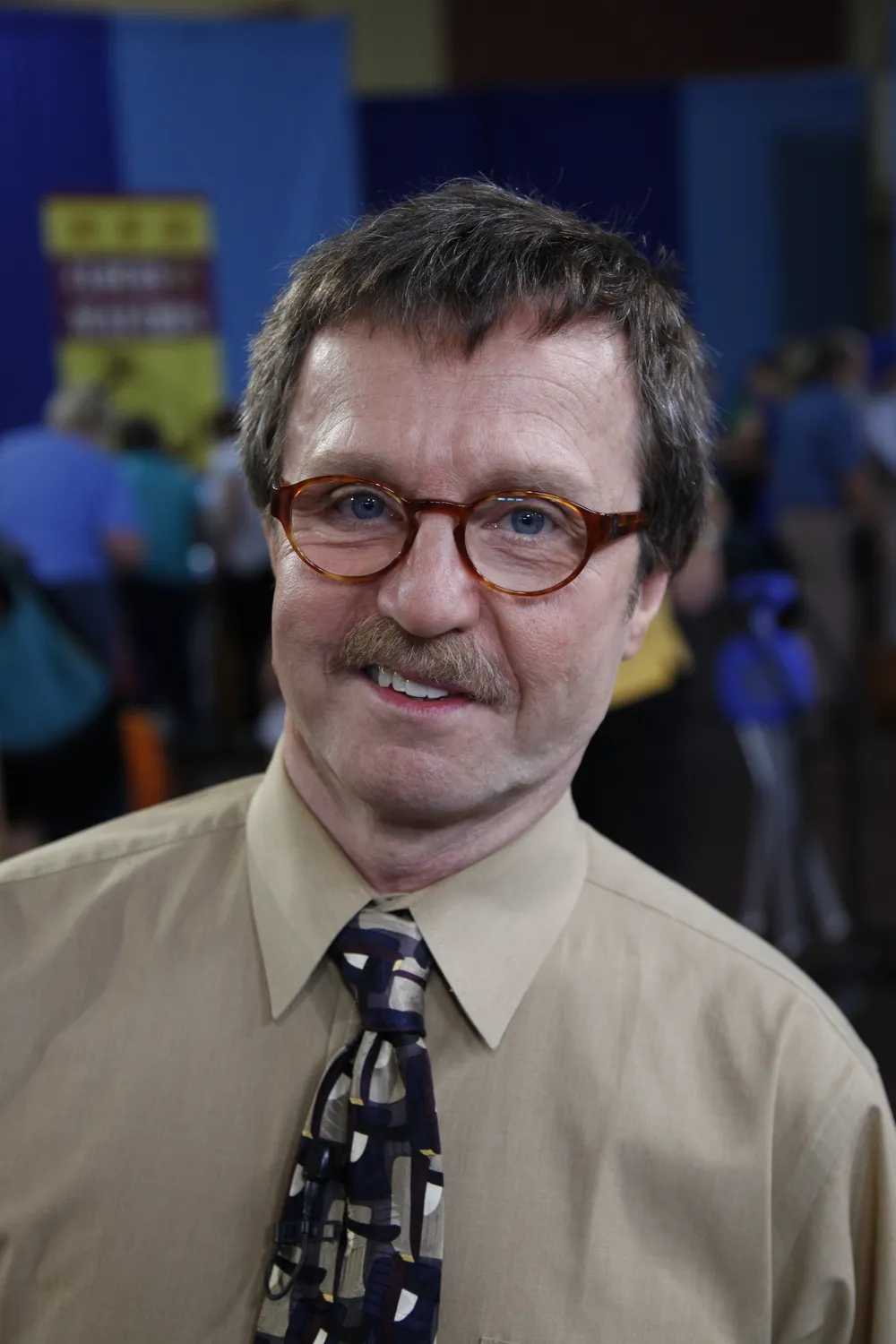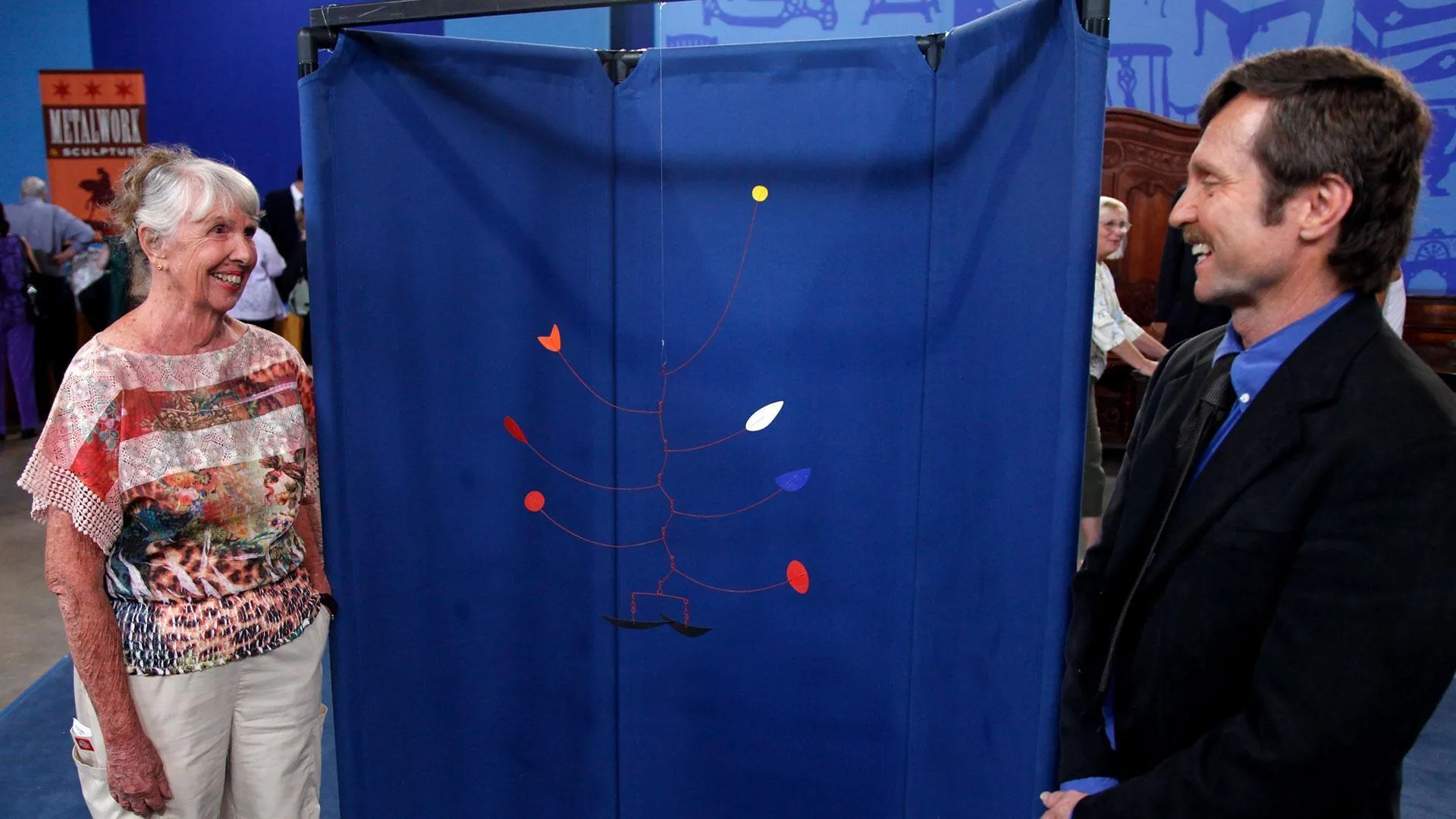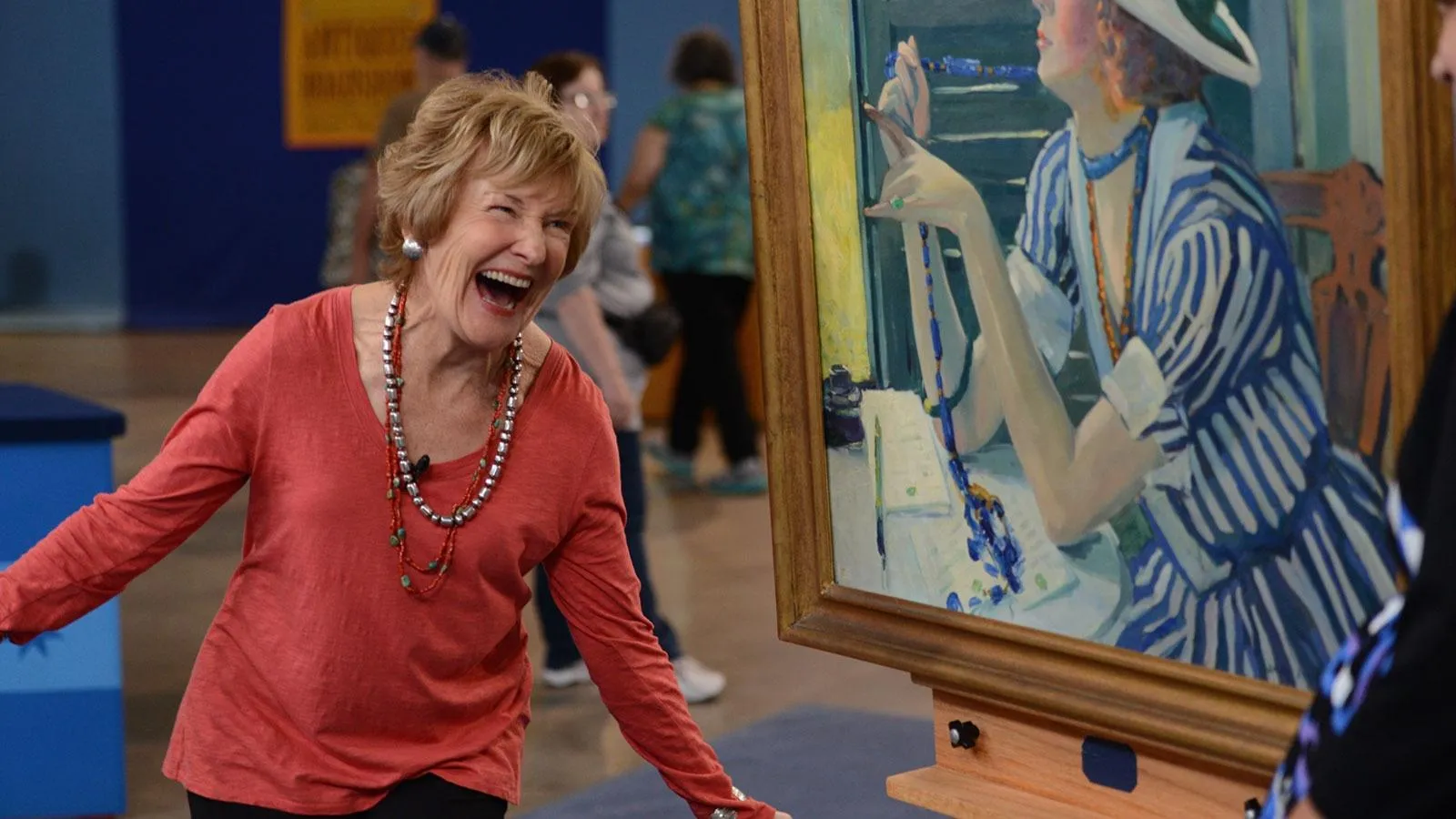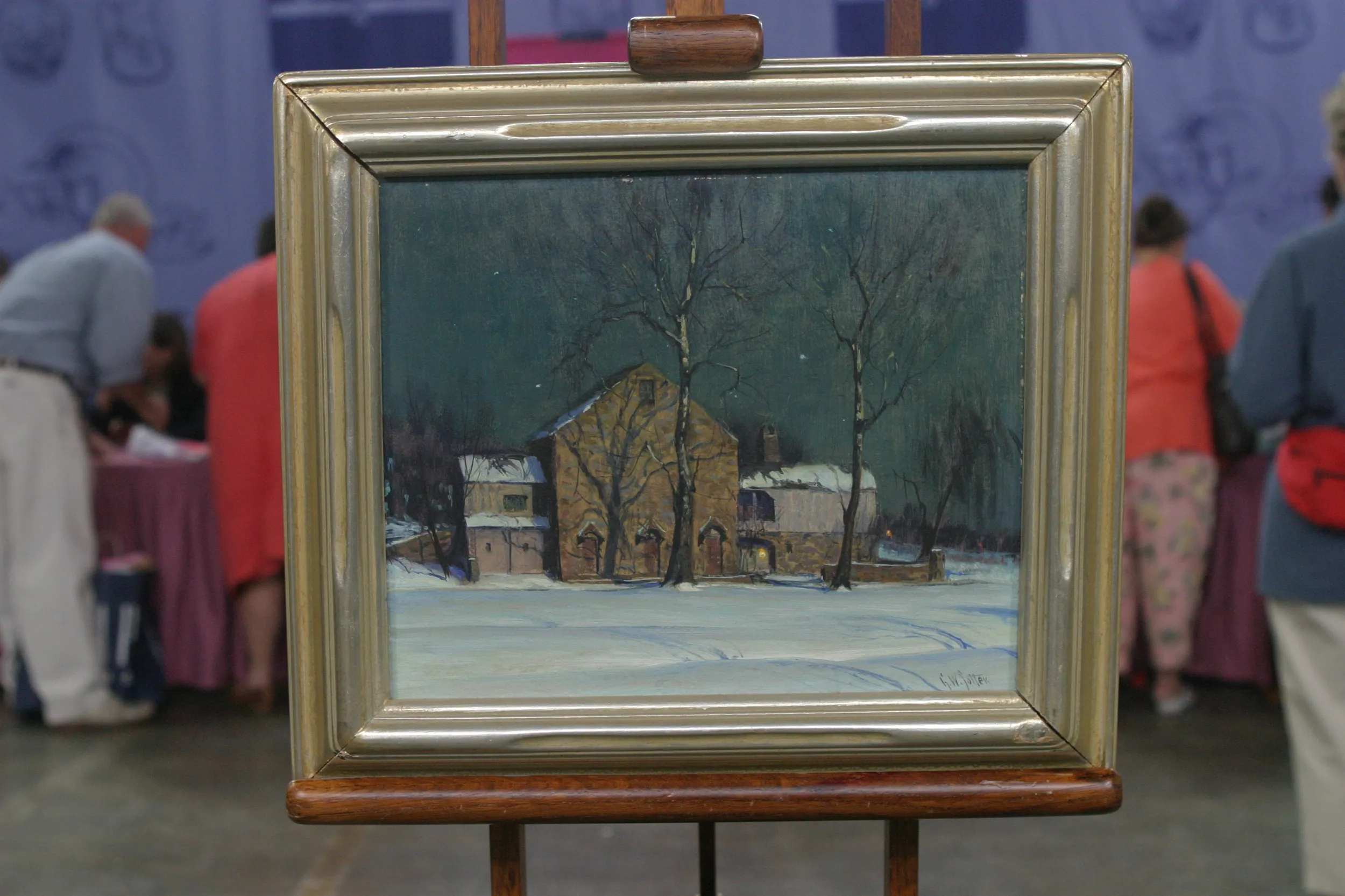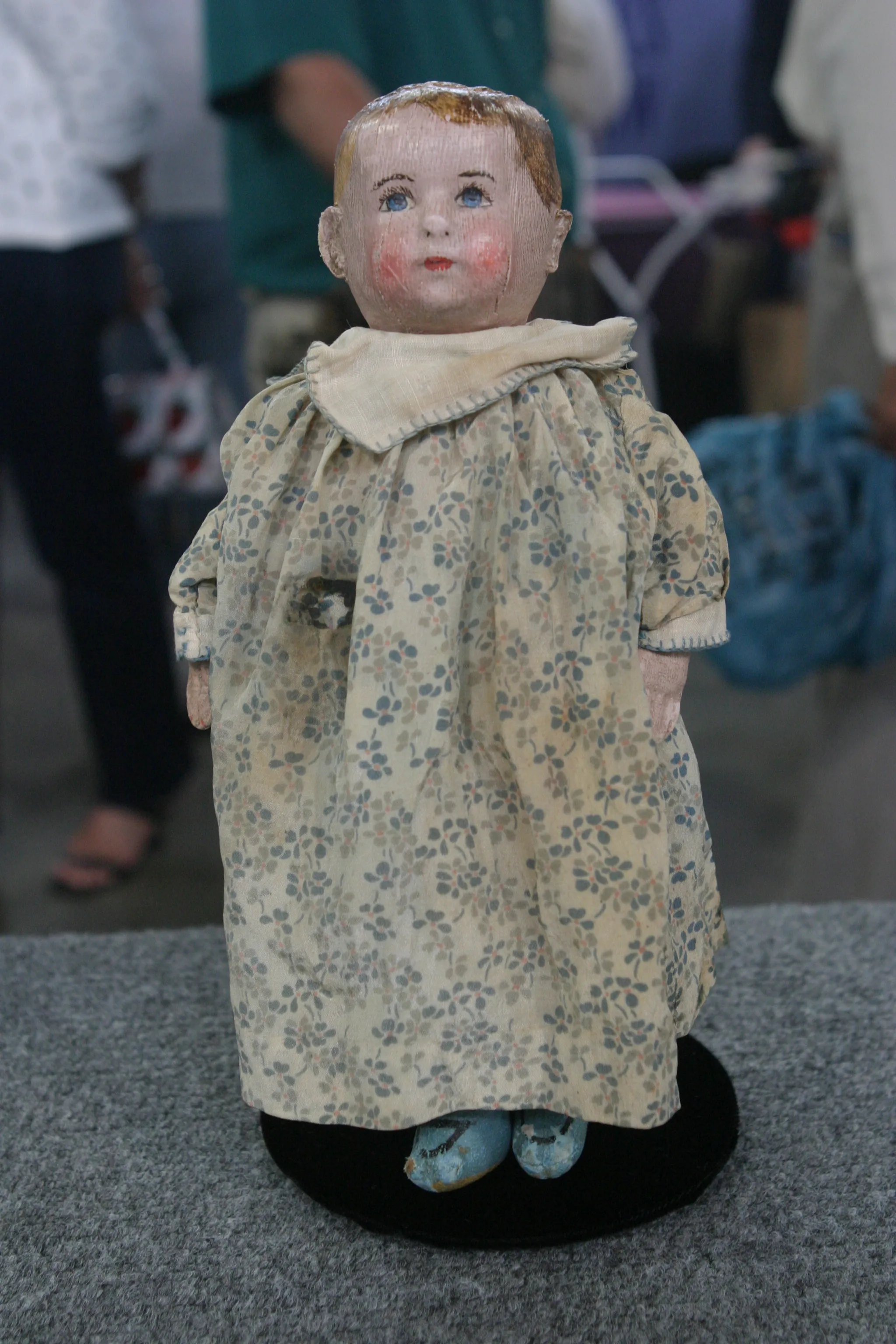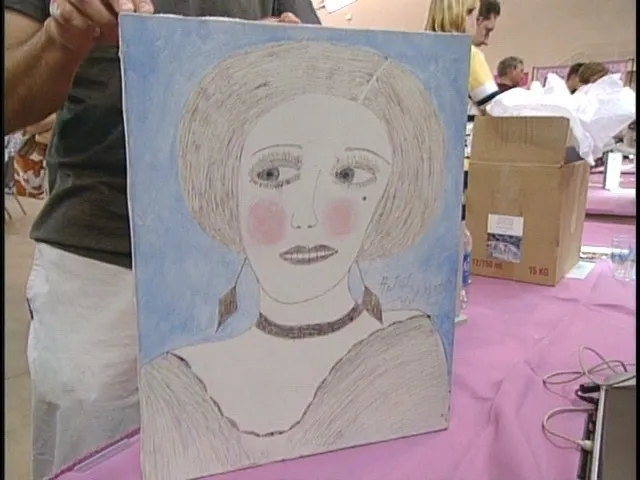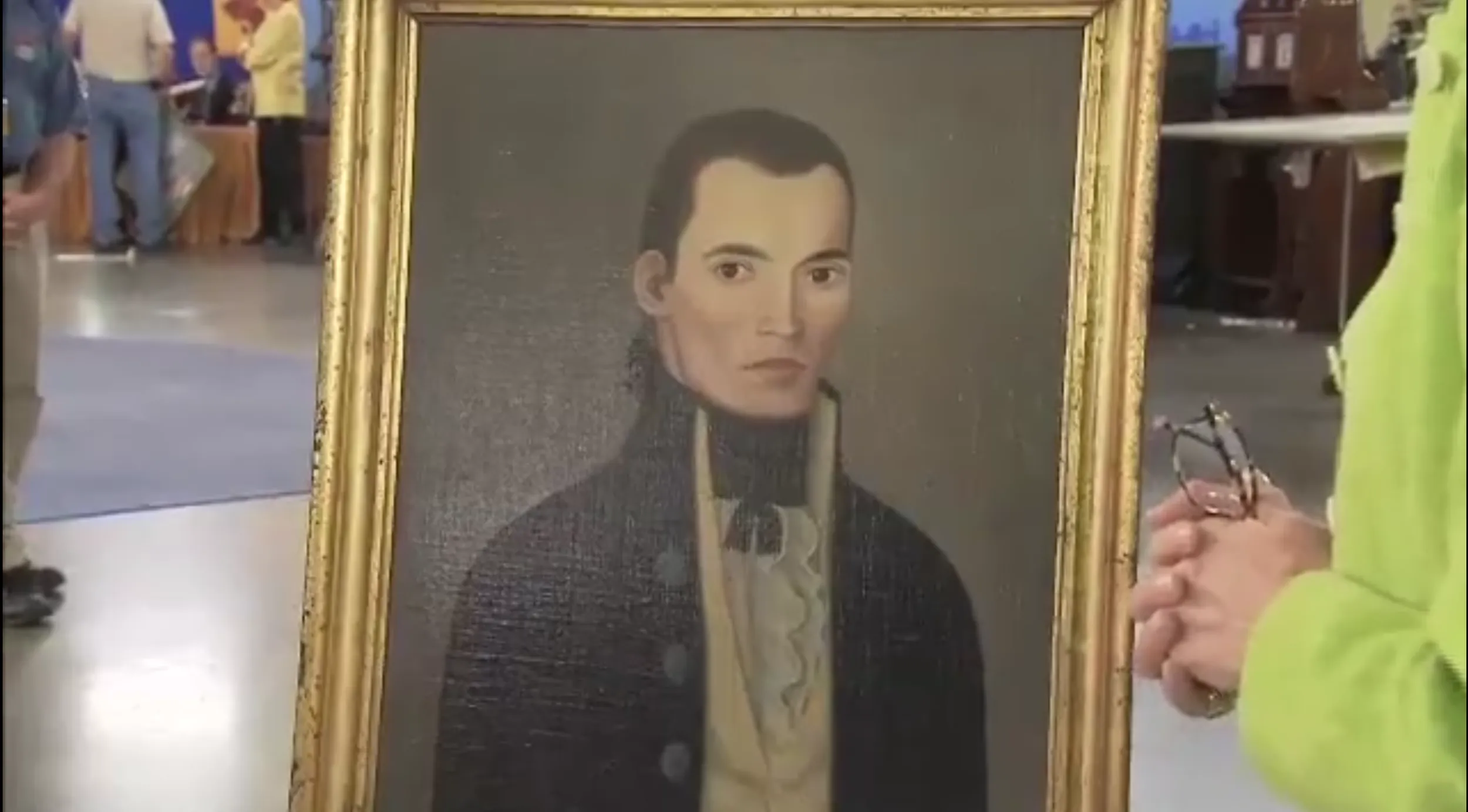GUEST: It's a mobile by Alexander Calder. And Calder gave it to my aunt. My aunt and uncle were having a cocktail party, and Calder was visiting friends of theirs who were invited to the party, so they took Calder along. And my aunt was very creative, and among other things, she had done a needlepoint pillow of one of Calder's works. And he was astounded. He'd never seen one like that before. And so she gave it to him. And a couple of days later, somebody appeared at the doorway and he had given her this mobile as a thank you for the pillow.
APPRAISER: You've owned this for a while, since 1985, I believe.
GUEST: Yeah.
APPRAISER: And, um, you had it, a slight restoration to it in 1986. Some of the colors were, uh, touched up a little bit.
GUEST: Yeah.
APPRAISER: And clearly that's going to have an effect on the value to a certain degree.
GUEST: Yeah.
APPRAISER: This was originally given to your aunt in 1958.
GUEST: Yes.
APPRAISER: But this probably, as far as the actual date of construction, dates a little bit earlier than 1958.
GUEST: Oh, yes. I think it's, early '40s was a guess.
APPRAISER: Alexander Calder essentially invented the art form, uh, known as a mobile.
GUEST: Right.
APPRAISER: And it became very iconic of 1950s modern art. And I think the late '50s sort of marks a turning point where he begins to concentrate more on larger installations. It's made on very thin wire, and then these are usually either aluminum or an anodized weather-resistant material...
GUEST: Yeah.
APPRAISER: ...that it's slipped in and then very delicately soldered. And you can see in here where all of the knots and joints all put in in a very balancing kind of format. He always liked the use of primary colors. This back one is a little bit more of an orange, and some of the other appraisers on the set thought this might be a little bit unusual for a color. We should mention the Alexander Calder Foundation...
GUEST: Yes.
APPRAISER: ...which is, major element in both identifying the work of, uh, Alexander Calder, authenticating it. And I believe that you had sent some documentation.
GUEST: We've sent the documentation, and a transparency, and they just said they would need to look at it in person. And we haven't gone to New
York to do that.
APPRAISER: Calder Association is, uh, like any foundation, is set up so that an artist's work are not diluted. And that's why they're very diligent about keeping up to make sure that things are authenticated. So if that they are sold, that they do have that authenticity. I know that earlier, back in the late '80s or '90s, you had an approximate value of what it was worth?
GUEST: The man who restored it said at least $30,000.
APPRAISER: It, it's gained a little bit in value since then. We worked on the values to somewhat of a, a consensus, and it still needs to be validated. Based upon that, a fair auction value, the range is somewhere between $400,000 and $600,000.
GUEST: How much?
APPRAISER: $400,000 to $600,000 at auction as somewhat of a wholesale price. Right now, Alexander Calder's market is extremely hot. And in a good retail setting, it would not be at all inconceivable that this very small, wonderful piece of art could probably break $1 million.
GUEST: Oh, my God.
APPRAISER: Not bad for a pillow.
GUEST: Oh! My problem is, I've got one mobile and two children.
GUEST AND APPRAISER: (both laughing)
Guest: Thank you.
APPRAISER: I'm sure your husband, who's watching off camera, will be equally, uh, equally happy with the good news.
GUEST: (laughs) Oh, I think so.
APPRAISER: That's great.
